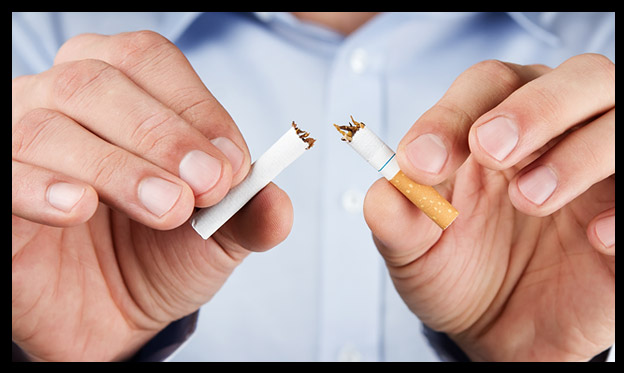

Smoking
Smoking is the biggest single cause of ill health in the Western World and it is important to understand and recognise the effects. Tobacco smoke contains over 4,000 different chemicals, many of which are harmful. NICOTINE, CARBON MONOXIDE and TAR are 3 components of smoke which affect the human body and cause disease.
NICOTINE:- is an addictive poison, which makes the heart beat faster, makes the blood pressure soar temporarily and also increases the risk of blood clots.
CARBON MONOXIDE:- is a poisonous gas released when tobacco burns. When inhaled it dramatically cuts the amount of oxygen the blood can carry around the body and to the heart.
TAR:- When cigarette smoke is inhaled it condenses and about 70% of the tar in smoke is deposited in the lungs, causing narrowing of the bronchioles.
Facts
- Smokers are at greater risk from illnesses and early death than non-smokers are.
- 90% of deaths from lung cancer are caused by smoking.
- Smoking is responsible for at least 50,000 early deaths each year in the UK.
Long Term Effects of Smoking
Smoking leads to an increased tendency towards the following problems:

- Heart Disease/Heart Attack/Stroke
- Vitamin C Depletion
- Lung Cancer
- Bad Breath
- Chronic Bronchitis
- Premature Births
- Release of excessive Stress Hormones
- Nicotine Stains
- Miscarriage
- Poor Digestion and appetite
Smoking shortens life expectancy, with the death rates from smoking related diseases directly related to both the number of cigarettes consumed and how long you have been smoking.

Passive Smoking
Cigarettes give off 2 types of smoke. Mainstream smoke is filtered by the cigarette and inhaled by the smoker, with side stream smoke going directly from the cigarette into the air. As side stream smoke it is not filtered, it contains higher concentrations of harmful substances than mainstream smoke.
Thus, smoking is dangerous to non-smokers, especially when they are exposed to it for
long periods of time.
Why Do People Smoke?
There are 6 factors that encourage the need for smoking. If an individual can identify what motivates them to smoke, they will know where to concentrate their efforts to stop.
| The list below shows the relative percentages for each type of smoker | ||
| CRUTCH | (30%) | Moments of fear or pressure |
| CRAVING | (25%) | The individual is totally dependent, and are constantly aware of when they are not smoking |
| RELAXATION | (15%) | Real pleasure is gained from the habit |
| STIMULATION | (10%) | The habit is stimulating |
| HANDLING | (10%) | Enjoyment comes from manipulating the cigarette |
| HABIT | (10%) | It is an automatic procedure, social habit |
How Do I give up?
- Make a firm decision to give up
- Select a definite date to give up
- Tell everyone you have stopped
- Occupy your hands
- Estimate how much money you will save
- Think positively
- Never risk just trying one
- Don't give up trying
- Take up regular exercise
- Picture yourself with more money etc
Giving up smoking is not an easy task - people use many excuses to avoid giving up.
It is your decision to give up and overcoming the first hurdle is the main challenge.
EVERYONE CAN DO IT IF THEY REALLY WANT TO!!! LET US HELP YOU...
Opening Times
| Monday - Friday | 6.00 - 21.00 |
| Saturday | 8.00 - 16.00 |
| Sunday | 8.00 - 14.00 |
How to find us











